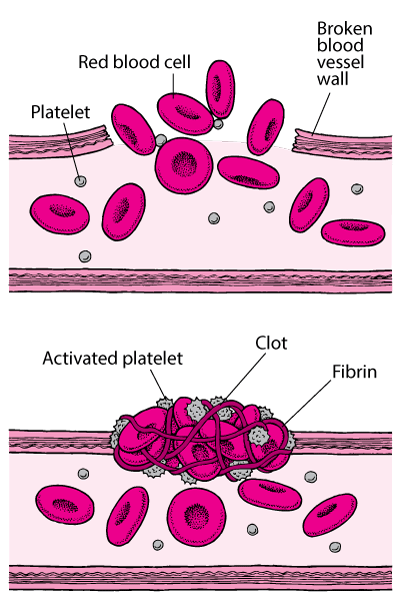Everybody is familiar with the sight of blood. Is it the red fluid that oozes out of our body when we have sustained a cut or a deep injury? What exactly is that?
Blood
Blood is a fluid tissue in our body. It is the medium in
which dissolved gases, nutrients, hormones and waste products are transported.
Blood along with the heart and the blood vessels comprises the circulatory
system of the body. As a tissue, blood is formed of cells and other components.
Let us discuss some more details about the cellular components of blood. Let us understand the method of finding out the composition of blood.
Composition of Blood
- Collect a sample of blood and transfer it into sterilized test tubes.
- Centrifuge the blood samples and observe the separated components under a microscope to study the composition of blood.
- The components of blood may broadly be divided into plasma and formed elements.
Plasma
- About 55% of blood is plasma and about 90% of plasma is water.
- Plasma also contains the vitamins, minerals, nutrients, proteins and waste products in the bloodstream.
- Plasma acts as the mode of transportation for blood cells.
Formed elements
Formed elements refer to the cellular components of blood they include red blood corpuscles or every through signs white black corpuscles or leukocytes and blood platelets or thrombocytes.
WBC
- White blood cells make up about scent of blood volume.
- They are larger than red blood cells and different types of WBC's can be seen in our blood.
- Unlike red cells, they are nucleated and independently mobile.
- They can assume funny shapes due to the amoeboid movement.
- White blood
cells are the body's main line of defense against infection.

- Your body needs to have enough white blood cells, so you can fight infections and stay healthy.
- If your white blood cell count is low, it is easier for you to fall sick when you get sick. Like when you have a sore throat, the number of white blood cells goes up higher than normal. This is because your body makes more white blood cells to help you get well a higher amount of white blood cells is a sign of infection in the body.
- White blood cells identify and attack an invading organism and they produce the antibodies that attack specific infections. The three types of white blood cells have specific missions in the body's defense.
- Observe how our immune system works, white blood cells can consume germs by the process of phagocytosis.
- It can also kill germs by the production of antibodies.
RBC
- It is the red blood cells, that give the red color to our blood.
- Red blood cells are red only because they contain a protein called hemoglobin, which is bright red in color.
- They are biconcave disk like structures and lack nucleus.
- These cells are highly flexible, allowing them to squeeze in through the tiniest capillaries.
- RBC's make up about 45% of blood.
- Red blood cells perform the most important blood duty. A single drop of blood contains millions of red blood cells which are constantly traveling through our body delivering oxygen and removing carbon dioxide.
- RBC's collect oxygen from the lungs and carry it to the cells all over the body. In turn they transferred carbon dioxide from cells back to lungs.
Platelets
- The third type of cells present in our body is called platelets. Platelets are irregularly shaped colorless bodies.
- Platelets are without nucleus and disk shaped.
- Their sticky surface lets them along with other substances form clots to stop bleeding.

- Clotting is the body's normal response to a bleeding injury to control bleeding from vessels larger than capillaries. A clot must form at the site of injury. When an injury such as a cut occurs, platelets become activated they change their shape, become sticky and build up on the wall of a blood vessel to form a plug.
- Platelets are also involved in the secretion of certain
proteins like fibrinogen into the blood plasma in a complex series of reactions. fibrinogen is converted into fibrin, an insoluble protein that forms an
intricate network of tiny threads called fibrils. Blood cells and plasma are
tangled in the network of fibrils to form the clot.


